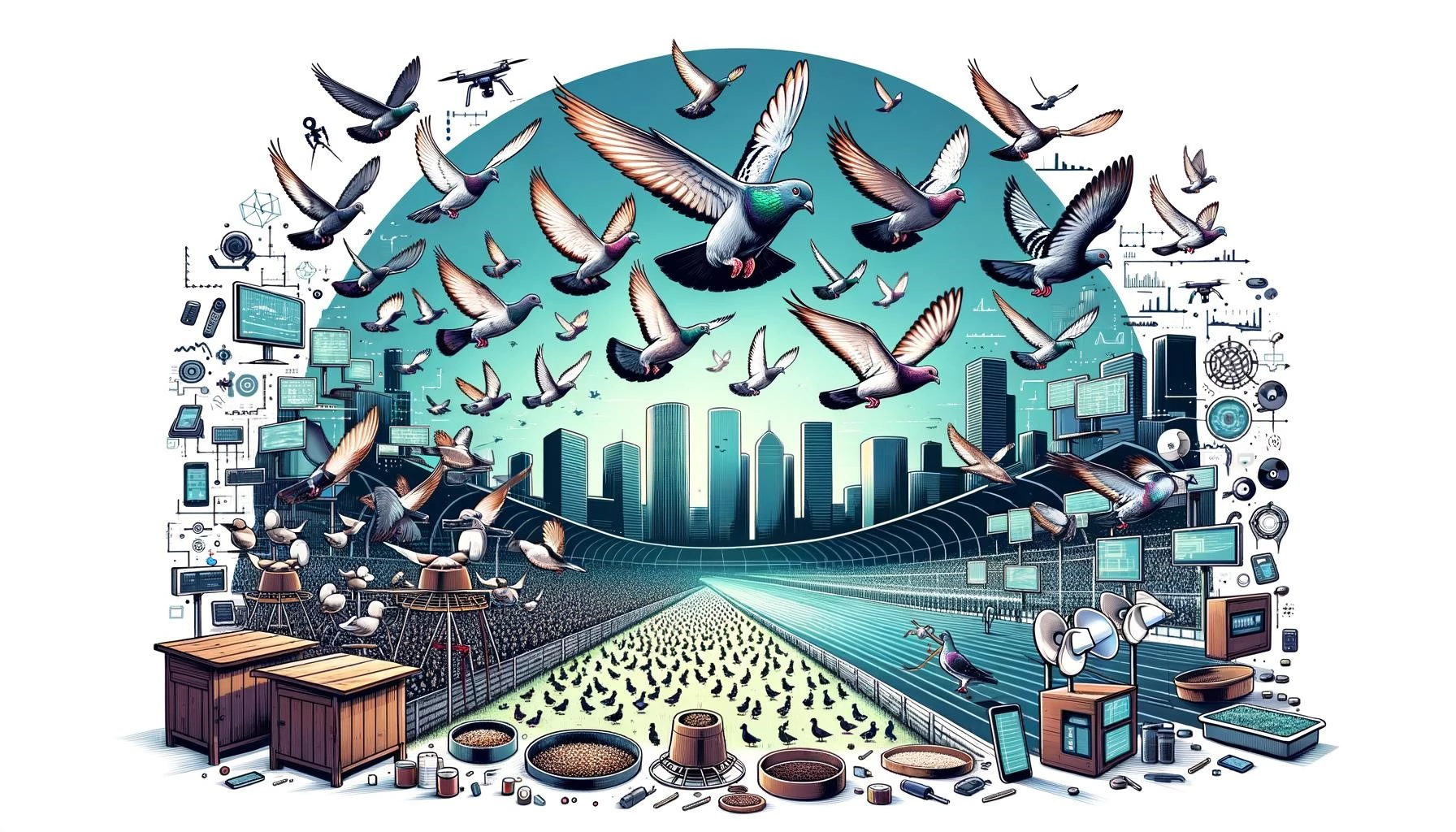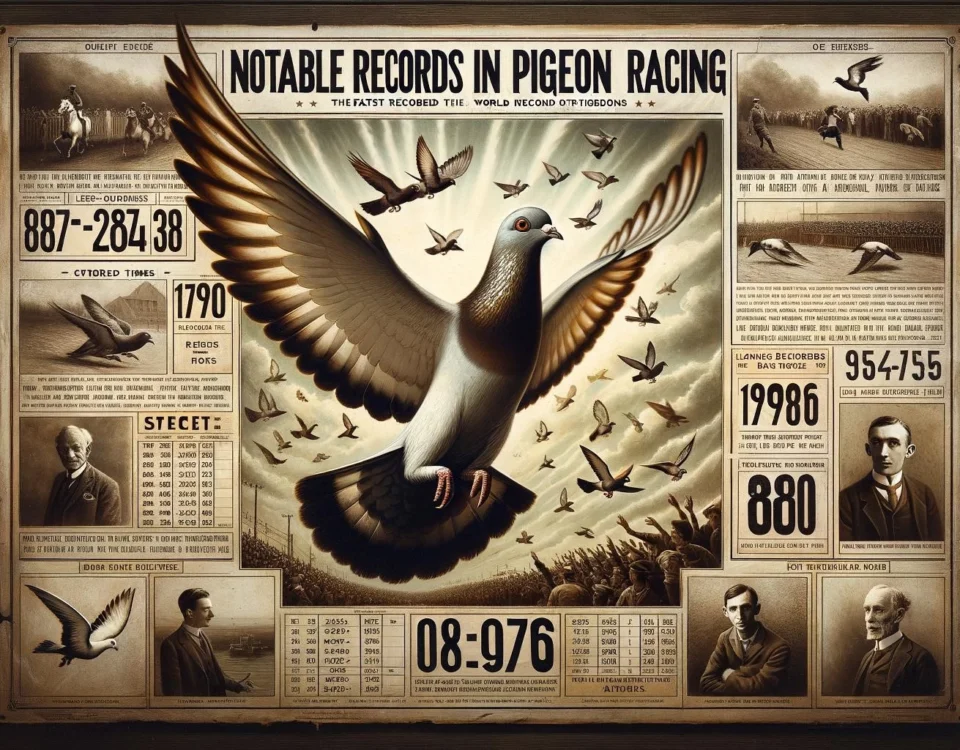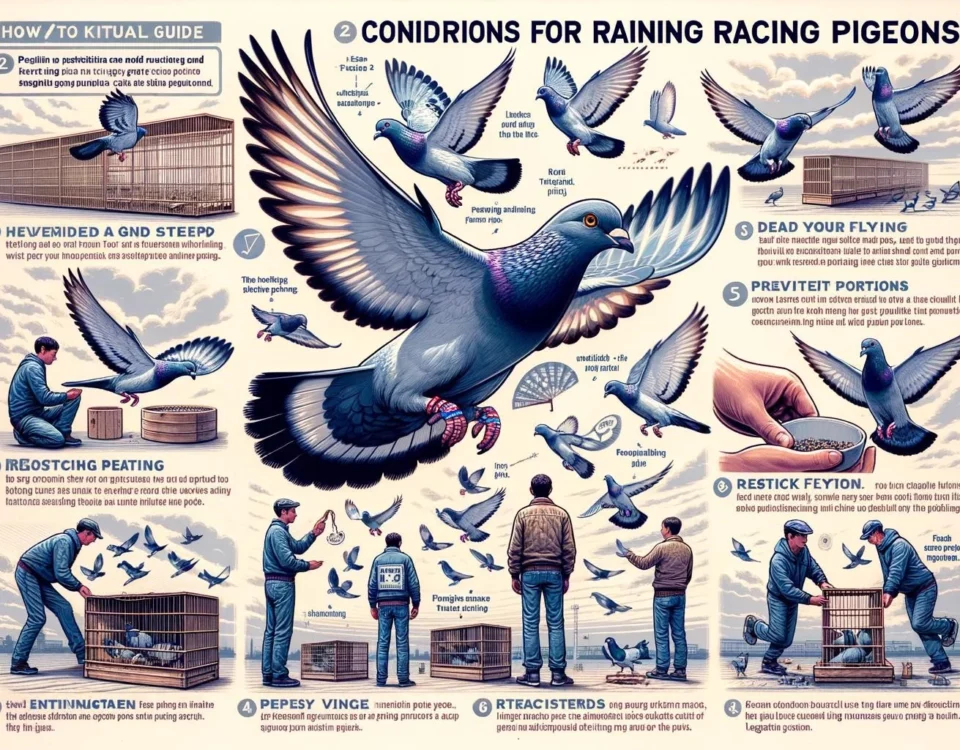Pigeon racing is a centuries-old tradition that has evolved significantly with the integration of modern technology. From electronic timing systems to GPS tracking, advancements in technology have revolutionized the sport, enhancing its precision, efficiency, and fairness. In this article, we will explore the various ways technology has impacted pigeon racing and discuss its future implications.
Key Takeaways
- Pigeon racing has witnessed significant technological advancements, including the integration of electronic timing systems and GPS tracking.
- Electronic timing systems employ electronic bands on each racing pigeon’s leg, accurately measuring flight time and providing real-time data.
- GPS tracking allows handlers to monitor race progress and analyze individual bird performance, enhancing the competitiveness of the sport.
- The future of pigeon racing looks promising, with advancements in technology expected to further enhance the sport and provide new opportunities for enthusiasts.
Evolution of Pigeon Racing Technology
Pigeon racing has a long history that dates back centuries. Initially, the sport relied on the natural navigational abilities of homing pigeons to find their way back to their lofts. However, with the advancements in technology, pigeon racing has transformed into a highly technical and data-driven sport.
One of the most significant advancements in pigeon racing technology is the integration of electronic timing systems. These systems use electronic bands or rings equipped with microchips and ring sensors attached to each racing pigeon’s leg. When a bird crosses a designated point, such as the loft entrance, the ring sensor reads the microchip information, recording the bird’s time of arrival. The data is then transmitted to a central database or cloud server, providing accurate and real-time information on flight times and rankings.
Additionally, GPS tracking has become an essential tool in pigeon racing. Traditionally, pigeons relied on their innate sense of direction to navigate back to their lofts. However, with the advent of GPS technology, handlers can now track the exact location and flight path of each racing pigeon throughout the race. GPS trackers attached to the birds provide valuable data on their speed, distance traveled, and flight patterns, allowing fanciers and enthusiasts to analyze individual bird performance and assess racing strategies.
Another technological innovation in pigeon racing is the use of software systems like the Racing Clocking System (RCS), which centralizes and manages race data. These systems facilitate the recording, processing, and analysis of race results, providing fair and transparent competitions. The integration of technology has also improved the accuracy of record-keeping, making it easier to track the performance and lineage of pigeons over time.
Technology has had a profound impact on pigeon racing, improving various aspects of the sport. Here are some key ways technology has influenced pigeon racing:
Accuracy and Fairness
Electronic timing systems have significantly enhanced the accuracy and fairness of pigeon racing. By accurately recording flight times, these systems eliminate the need for manual timekeeping, reducing the potential for human error or biased judgments. This ensures that the fastest bird, as determined by objective data, is declared the winner. Moreover, the use of electronic timing systems promotes transparency and fairness in the sport, as the real-time data is available for all participants and spectators to see.
Performance Analysis
GPS tracking technology allows fanciers and enthusiasts to analyze the performance of racing pigeons in detail. By monitoring each bird’s speed, flight path, and distance traveled, handlers can identify patterns and trends, enabling them to make more informed decisions on breeding, training, and racing strategies. This data-driven approach helps improve the overall performance of the flock and increases the chances of success in races.
Enhanced Competitiveness
The integration of technology in pigeon racing has raised the level of competitiveness in the sport. With real-time data on flight times and rankings, fanciers can evaluate their bird’s performance against competitors and make adjustments accordingly. The availability of accurate performance data also motivates fanciers to strive for improvement and pushes the boundaries of the sport.
The Future of Technology in Pigeon Racing
The future of pigeon racing looks promising, with continuous advancements in technology expected to further revolutionize the sport. Here are some potential developments on the horizon:
Improved Tracking and Monitoring
Advancements in GPS tracking technology may lead to even more precise and reliable systems. Smaller and lighter GPS trackers with longer battery life could allow for uninterrupted tracking throughout long-distance races. Additionally, advancements in data analysis and visualization could provide more comprehensive insights into pigeon performance, beyond just speed and flight path.
Smart Loft Technology
Smart loft technology, leveraging the Internet of Things (IoT), could transform how pigeons are housed and managed. Automated feeding systems, environmental controls, and health monitoring devices could optimize the conditions for the birds, enhancing their overall well-being and racing potential. Real-time monitoring of loft conditions, such as temperature, humidity, and air quality, can help fanciers create the ideal environment for their pigeons to thrive.
Data-driven Breeding Programs
The integration of technology in pigeon racing can also fuel data-driven breeding programs. By analyzing the performance data of pigeons over multiple generations, fanciers can identify genetic traits associated with racing success. This knowledge can guide breeding decisions, leading to the development of exceptional racing bloodlines and increasing the chances of producing high-performing pigeons.
In conclusion, technology has brought significant advancements to the world of pigeon racing. From electronic timing systems to GPS tracking, these technological innovations have improved the accuracy, fairness, and competitiveness of the sport. Looking ahead, further advancements in technology are expected to continue enhancing the pigeon racing experience, providing new opportunities for enthusiasts and pushing the boundaries of the sport.









